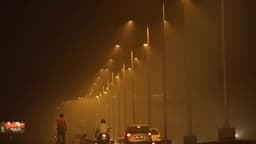Home / Environment / Delhi's Pollution Forecasting System Fails to Accurately Predict Stubble Burning Impact
Delhi's Pollution Forecasting System Fails to Accurately Predict Stubble Burning Impact
11 Nov
Summary
- Decision Support System (DSS) unable to accurately forecast stubble burning contribution
- Actual stubble burning contribution remains below 10%, despite DSS projections of over 30%
- DSS relies on outdated 2021 emissions inventory, raising questions about forecast validity

As of 2025-11-11T06:25:52+00:00, the Decision Support System (DSS), the only source apportionment study currently available to identify sources contributing to Delhi's PM 2.5 pollution, has been struggling to accurately forecast the impact of stubble burning in the capital.
In recent days, DSS forecasts projected that stubble burning could contribute over 30% to Delhi's PM 2.5 levels. However, the actual contributions have remained below 10% on all days, based on fire counts recorded later in the day. Officials explain that this year's stubble fires have not peaked yet, and the model's inability to capture fires occurring after the satellite pass time of 2:30 pm has led to these inaccuracies.
Furthermore, the DSS continues to rely on an outdated 2021 emissions inventory, raising questions about the validity of its forecasts. Last year, the Commission for Air Quality Management (CAQM) had flagged this issue and temporarily halted DSS operations, directing the Indian Institute of Tropical Meteorology (IITM) to make "certain changes" to improve accuracy.
Despite these challenges, the DSS remains the primary tool for identifying pollution sources in Delhi. Experts emphasize the need for transparency and accurate, up-to-date data to ensure the system's credibility in the fight against air pollution.



